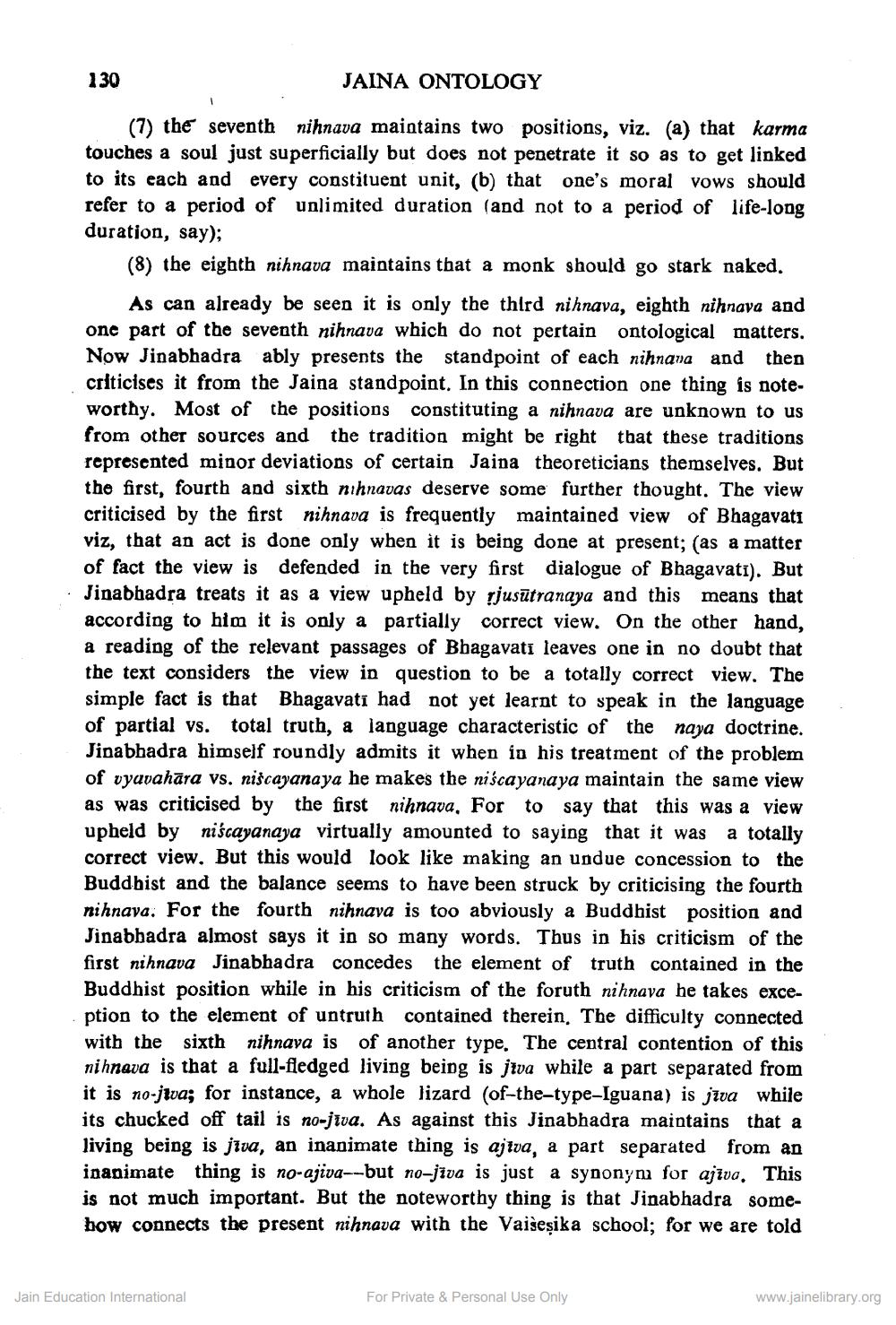________________
130
JAINA ONTOLOGY
(7) the seventh nihnava maintains two positions, viz. (a) that karma touches a soul just superficially but does not penetrate it so as to get linked to its each and every constituent unit, (b) that one's moral vows should refer to a period of unlimited duration (and not to a period of life-long duration, say);
(8) the eighth nihnava maintains that a monk should go stark naked.
As can already be seen it is only the third nihnava, eighth nihnava and one part of the seventh nihnava which do not pertain ontological matters. Now Jinabhadra ably presents the standpoint of each nihnana and then criticises it from the Jaina standpoint. In this connection one thing is noteworthy. Most of the positions constituting a nihnava are unknown to us from other sources and the tradition might be right that these traditions represented minor deviations of certain Jaina theoreticians themselves. But the first, fourth and sixth nihnavas deserve some further thought. The view criticised by the first nihnava is frequently maintained view of Bhagavati viz, that an act is done only when it is being done at present; (as a matter of fact the view is defended in the very first dialogue of Bhagavati). But Jinabhadra treats it as a view upheld by rjusūtranaya and this means that according to him it is only a partially correct view. On the other hand, a reading of the relevant passages of Bhagavati teaves one in no doubt that the text considers the view in question to be a totally correct view. The simple fact is that Bhagavati had not yet learnt to speak in the language of partial vs. total truth, a language characteristic of the naya doctrine. Jinabhadra himself roundly admits it when in his treatment of the problem of vyavahāra vs. niscayanaya he makes the niscayanaya maintain the same view as was criticised by the first nihnava, For to say that this was a view upheld by niscayanaya virtually amounted to saying that it was a totally correct view. But this would look like making an undue concession to the Buddhist and the balance seems to have been struck by criticising the fourth nihnava. For the fourth nihnava is too abviously a Buddhist position and Jinabhadra almost says it in so many words. Thus in his criticism of the first nihnava Jinabhadra concedes the element of truth contained in the Buddhist position while in his criticism of the foruth nihnava he takes exception to the element of untruth contained therein. The difficulty connected with the sixth nihnava is of another type. The central contention of this nihnava is that a full-fledged living being is jiva while a part separated from it is no-juva; for instance, a whole lizard (of-the-type-Iguana) is jīva while its chucked off tail is no-jiva. As against this Jinabhadra maintains that a living being is jīva, an inanimate thing is ajiva, a part separated from an inanimate thing is no-ajiva--but no-jiva is just a synonym for ajiva. This is not much important. But the noteworthy thing is that Jinabhadra somehow connects the present nihnava with the Vaiseșika school; for we are told
Jain Education International
For Private & Personal Use Only
www.jainelibrary.org




